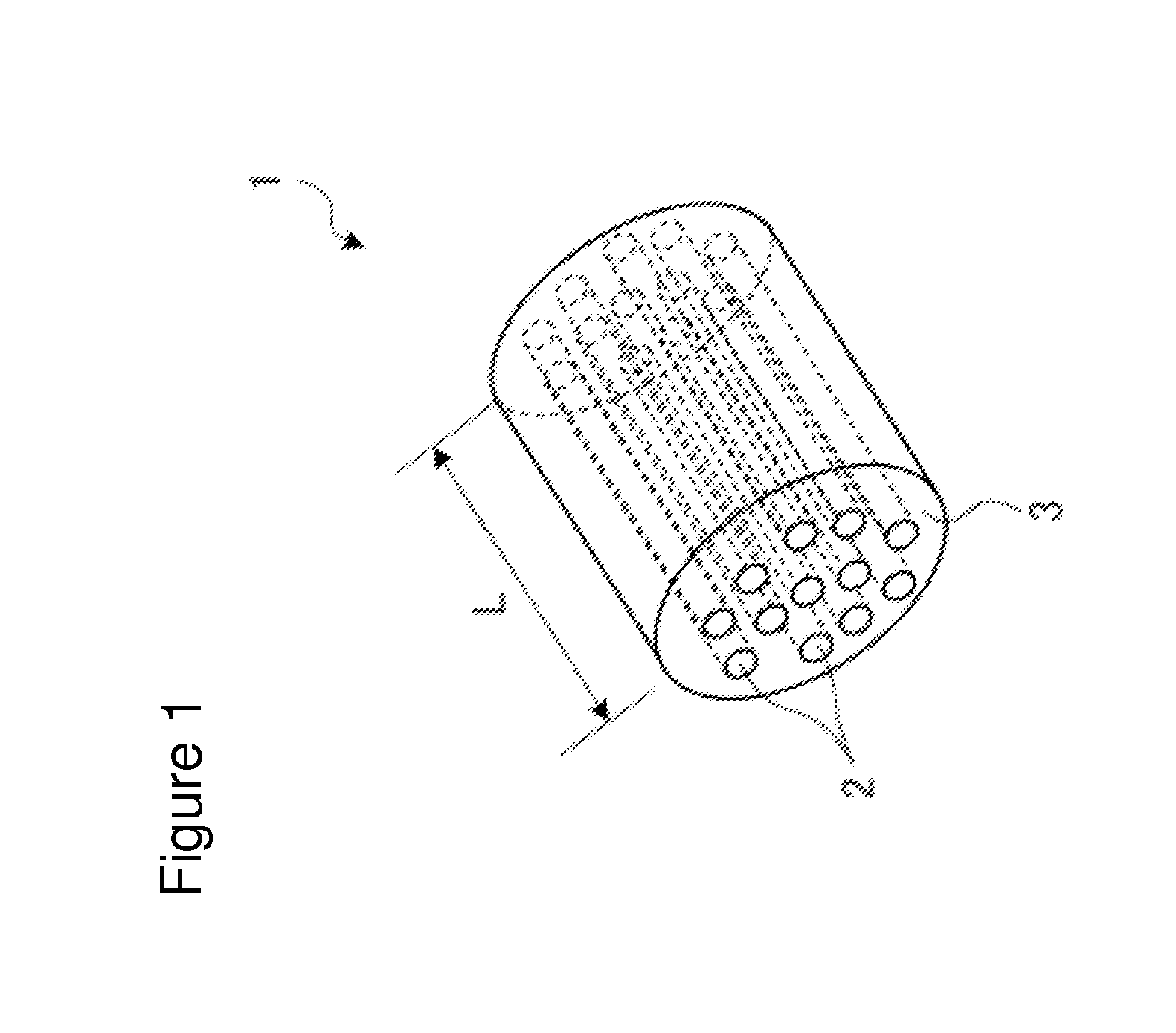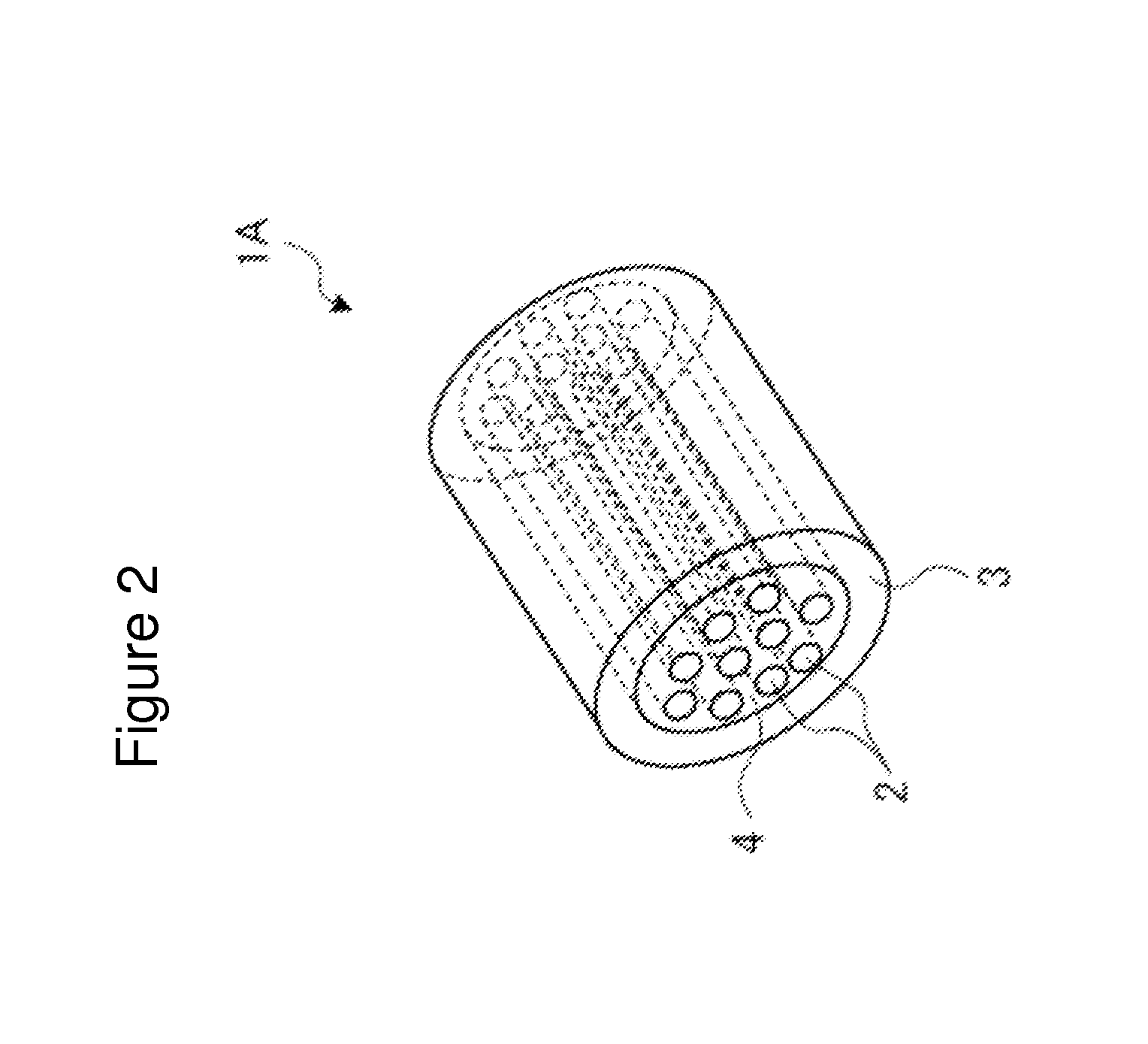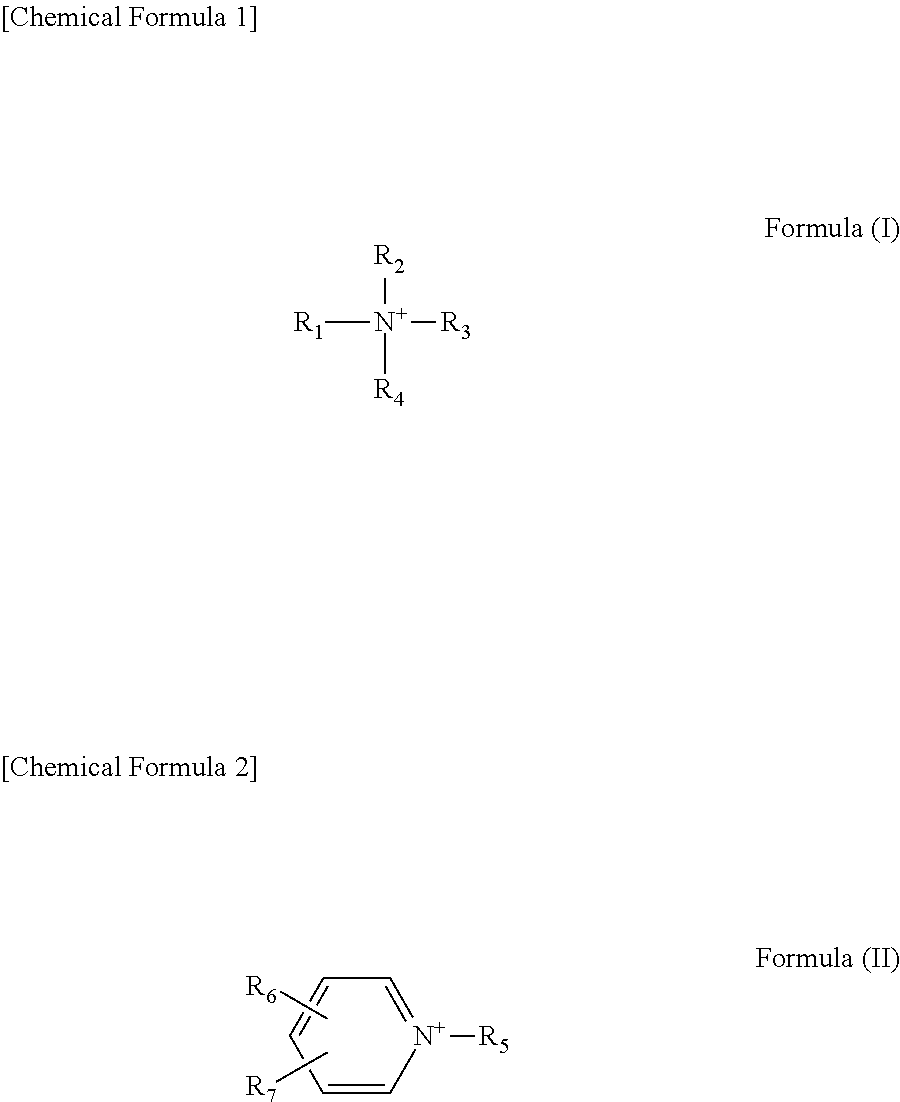Carbon fiber-reinforced thermoplastic resin composition, molding material, prepreg, and methods for producing same
a thermoplastic resin and carbon fiber technology, applied in the field of carbon fiber-reinforced thermoplastic resin composition, molding materials, and methods for producing same, can solve the problems of insufficient interfacial adhesion which can be achieved by such an oxidation treatment alone, poor collectability and friction resistance of carbon fiber, and easy fuzz and thread breakage, etc., to achieve excellent dynamic characteristics, enhanced interfacial adhesion between carbon fiber and thermoplastic resin, excellent strength and elastic modulus
- Summary
- Abstract
- Description
- Claims
- Application Information
AI Technical Summary
Benefits of technology
Problems solved by technology
Method used
Image
Examples
examples
[0428]Next, the present invention will be described in detail by way of Examples, but the present invention is not limited to these Examples.
[0429]The strand tensile strength and the strand elastic modulus of a carbon fiber bundle were determined in accordance with the following process based on the resin-impregnated strand test method in JIS-R-7608 (2004). As a resin formulation, “CELLOXIDE (registered trademark)” 2021P (manufactured by Daicel Chemical Industries, Ltd.) / boron trifluoride monoethylamine (manufactured by Tokyo Chemical Industry Co., Ltd.) / acetone=100 / 3 / 4 (parts by mass) was used, and as curing conditions, conditions of normal pressure, temperature: 125° C. and time: 30 minutes were used. Ten strands of carbon fiber bundle were measured, and an average value thereof was determined for each of the strand tensile strength and the strand elastic modulus.
[0430]The surface oxygen concentration (O / C) of carbon fiber was determined in accordance with the following process by...
example 1
[0472]This Example includes the following first to fifth steps.[0473]First step: step of producing carbon fiber as a raw material.
[0474]A copolymer including 99 mol % of acrylonitrile and 1 mol % of itaconic acid was spun, and baked to obtain carbon fiber having a total filament number of 24000, a total fineness of 1000 tex, a specific gravity of 1.8, a strand tensile strength of 6.2 GPa and a strand tensile elastic modulus of 300 GPa. Then, the carbon fiber was subjected to an electrolytic surface treatment at an electricity amount of 100 C per 1 g of carbon fiber using an aqueous ammonium hydrogen carbonate solution with a concentration of 0.1 mol / L as an electrolytic solution. The carbon fiber subjected to an electrolytic surface treatment was subsequently rinsed, dried in heated air at a temperature of 150° C. to obtain carbon fiber as a raw material. The surface oxygen concentration O / C at this time was 0.20. This was designated as carbon fiber A.[0475]Second step: step of depo...
examples 2 to 5
[0483]First step: step of producing carbon fiber as a raw material.
[0484]Carbon fiber was produced in the same manner as in Example 1.[0485]Second step: step of depositing a sizing agent on carbon fiber.
[0486]Sizing agent-applied carbon fiber was obtained using the same method as that in Example 1, except that the mass ratio of the components (A-4) and (B-1) was changed in a range of 100:3 to 100:20 as shown in Table 1. The deposition amount of the sizing agent was 0.5 parts by mass based on 100 parts by mass of the surface-treated carbon fiber in each case.[0487]Third to fifth steps.
[0488]Test pieces for evaluation of characteristics were formed using the same method as that in Example 1. Next, the obtained test pieces for evaluation of characteristics were evaluated in accordance with the above-described method for evaluation of an injection-molded article. The results were summarized in Table 1. As a result, it was found that dynamic characteristics were sufficiently high with th...
PUM
| Property | Measurement | Unit |
|---|---|---|
| carbon number | aaaaa | aaaaa |
| length | aaaaa | aaaaa |
| width | aaaaa | aaaaa |
Abstract
Description
Claims
Application Information
 Login to View More
Login to View More - R&D
- Intellectual Property
- Life Sciences
- Materials
- Tech Scout
- Unparalleled Data Quality
- Higher Quality Content
- 60% Fewer Hallucinations
Browse by: Latest US Patents, China's latest patents, Technical Efficacy Thesaurus, Application Domain, Technology Topic, Popular Technical Reports.
© 2025 PatSnap. All rights reserved.Legal|Privacy policy|Modern Slavery Act Transparency Statement|Sitemap|About US| Contact US: help@patsnap.com



